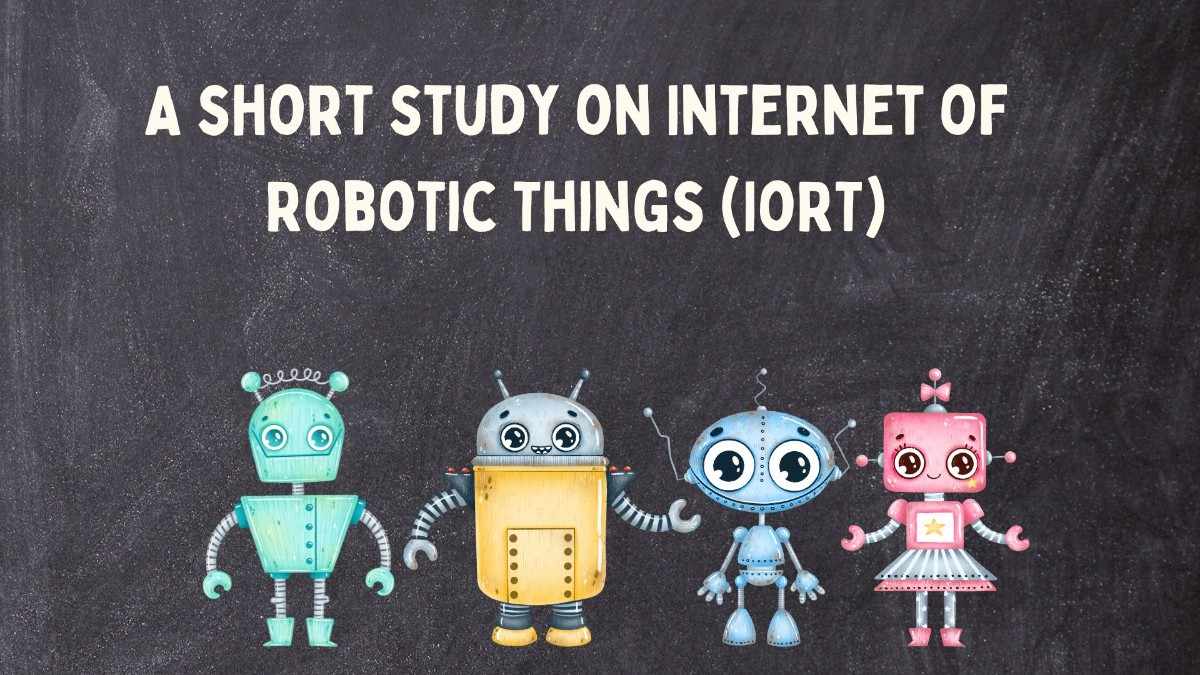The Internet of Robotic Things (IoRT) combines robotics with the Internet of Things (IoT) to create an environment where intelligent robots and machines communicate, interact, and collaborate. This integration enhances improved automation of robotics, data- analysis, and decision-making processes in various operations. This integration enhances improved automation of robotics, data- analysis, and decision-making processes in various operations.
Here’s an overview:
1. Definition of IoRT in simple words
- IoRT refers to the converging of robots and IoT technologies, wherein robots are handled by using sensors, networking connections involved, and data processing for communication with other IoT devices in real-time.
- These robots can autonomously collect data, make decisions, and collaborate with other systems and much more.
2. Components of IoRT
- Robots: These are physical machines capable of carrying out tasks in an automatic manner. Eg- include drones, and healthcare or industrial robots.
- Sensors: These are embedded in robots to get more information basically on environmental data (e.g., temperature, pressure, motion) and perform physical movement like sensing.
- Connectivity: Robots in an IoRT environment interact verbally using Wi-Fi with each other and cloud systems using technologies such as Wi-Fi, 5G, Bluetooth, and LPWAN.
- Cloud and Edge Computing: To produce for large amounts of data and make intelligent decisions, cloud platforms and edge computing devices are utilized for real-time data process.
- Artificial Intelligence (AI) & (ML): Robots leverage AI and ML algorithms to improve their decision-making abilities, adapt to new situations, and optimization of new machines with better functionality.
3. Key Features of IoRT
- Autonomous Communicative experience: It helps enable them to share data and perform basic or tough tasks based on gathered intelligence of both collectively.
- Real-time Data Processes: The integration of cloud computing and edge devices allows for quick analysis of data, enabling robots to make instant decisions and processes.
- Remote Control and Monitoring of machines: IoRT facilitates remote management of robots through connected systems, allowing users to control-monitor-modify all actions from any location.
- Data Sharing and Analytics: Robots in an IoRT ecosystem can share data with other devices, which can then be analyzed to optimize operations, and improvement of performance over time.
4. Applications of IoRT
- Manufacturing and Industry 4.0: Robots in factories can work for improvement for production efficiency, prediction for maintaining software, and adapt to real-time changes, for eg – Collaborative robots (cobots) who work alongside human workers for more productivity.
- Healthcare: In surgeries, monitoring of patients, and rehabilitation support. Also interact with IoT-enabled medical devices for any medication needed.
- Autonomous Vehicles: Self-driving cars, trucks, and drones use IoRT to communicate with each other and to navigate, avoid obstacles, and optimize routes.
- Smart Homes: Perform tasks such as cleaning, security surveillance, and maintenance for eg- smart thermostats.
- Agriculture: Agricultural robots powered by IoRT can manage and seek crop health, adjust for more irrigation, and harvesting of crops.
- Logistics and Supply Chain: Autonomous vehicles, like – drones and more like robotic delivery systems, they help in optimising your last-minute delivery.
5. Various Challenges
- Security and Privacy: in this day and age, the likelihood of cyberattacks, data breaches, and illegal access to information is rising gradually. Sensitive data must be safeguarded and that calls for rigorous safety precautions.
- Lack of Standardization: This lack of uniformity can make it easier for robots as well as IoT devices to interact with one another seamlessly. For machines to successfully interact across multiple operating systems, that must be an overall framework or assortment of standards in order to fully unleash the enormous potential of IoRT.
- Integration with Legacy Systems: A lot of sectors still use outdated technologies that might not work with the latest IoRT developments. It can be challenging, costly, and time-consuming to incorporate IoRT technology into these established infrastructures, which may hinder adoption.
- Integration Complexity: Integrating robotics with contemporary IoT systems can be a complicated process which calls for an advanced amount of technical know-how..
- High Initial Cost: Others may find the initial outlay necessary for sophisticated robotics and IoT infrastructure to be unaffordable.
- System Reliability: Constant information interchange between robots, sensors, and other equipment is essential to IoRT systems.
- Job Displacement: The possible loss of human labour is one of the mostly asked and contested issues surrounding the widespread application of IoRT. Jobs in sectors like manufacturing, shipping, and even healthcare might be lost as more operations are automated by robots. This raises concerns about the nature of work in the future.
- Latency Issues: Decisions need to be made quickly for a lot of IoRT applications, including industrial robots or driverless cars. Robots and IoT devices may perform worse due to network latency, which could result in errors, longer reaction times, or safety concerns.
6. Future of IoRT
- As technology develops, this might result in smart cities, completely automated manufacturing, and sophisticated healthcare systems.
- A couple of companies in the United Kingdom are trying to combine the IoT with robotics to make strides in precision agriculture. Some of the robots in development have sensors that can conduct soil tests more efficiently than humans can.
- Many other environments can change with little warning. For example, if a robot receives data from IoT sensors placed around an industrial factory, it could adjust its movements as needed.
Conclusion
The Internet of Robotic Things (IoRT) is revolutionizing industries by giving intelligent solutions for a variety of tasks. This overview shows some of the probable benefits of developing applications and products that depend on both IoT and robotics to work.
As AI and machine learning continue to evolve, IoT devices and robots will become increasingly intelligent and capable of learning from their experiences.
Also Read:
